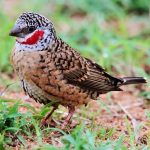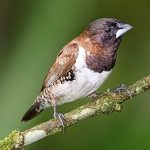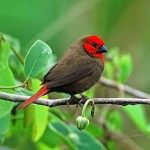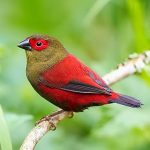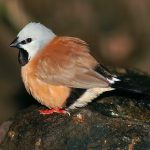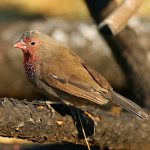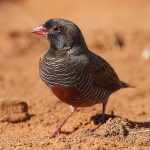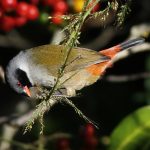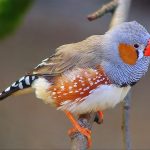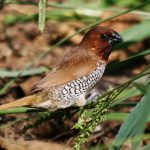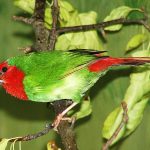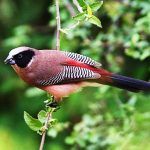Red avadavat
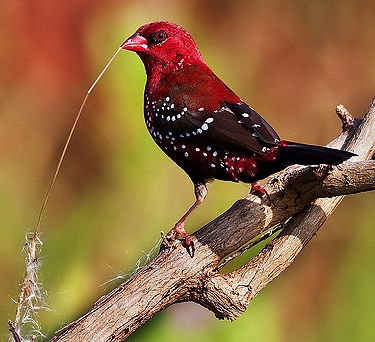
 |
| Photo by Jayaprakash Siddapura (Flickr) |
Common name:
red avadavat (en); bengali-vermelho (pt); bengali rouge (fr); bengalí rojo (es); tigerfink (de)
Taxonomy:
Order Passeriformes
Family Estrildidae
Range:
These birds originate from southern Asia, being found from central Pakistan, through India and Bangladesh, and into Myanmar, southern China, Vietnam, Cambodja, south-eastern Thailand, Indonesia and East Timor. This species is commonly used in the pet trade and introduced population have been recorded in Italy, Spain, Brunei, Fiji, Portugal, Malaysia, Puerto Rico, Singapore and Hawaii.
Size:
These birds are 9-10 cm long and have a wingspan of 13-14,5 cm. They weigh around 10 g.
Habitat:
These birds are mostly found in marshes and riparian areas, in tall grasses, reedbeds and also in rice fields and sugar cane plantations.
Diet:
Red avadavats mostly feed on grass seeds, but can also eat small insects like termites.
Breeding:
These birds mostly breed in June-January. Both sexes build the nest, a globular structure made of grasses that is placed in a dense scrub. There the female lays 4-7 white eggs which are incubated by both parents for 11-14 days. The chicks fledge 20-21 days after hatching, but only become fully independent 2-3 weeks later.
Conservation:
IUCN status – LC (Least concern)
This species has a very large breeding range and is described as common or locally common. Despite its common use in the international pet trade, the population is suspected to be stable in the absence of evidence for any declines or substantial threats.



